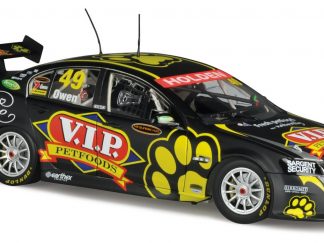Description
Holden EH S4 Sedan – Quandong
Released 26th August 1963, the EH has proven to be one of Australia’s all-time most popular car, selling a record 256,959 units. With a completely new, more powerfull engine, clever styling changes and a price matching the EJ at $2102, made the EH value for money. It was these factors that created much interest prior to its release and lead to quick sales giving it the title of Australia’s fastest selling car ever.
The new powerplant, dubbed the ‘red engine’, after the colour of its painted block, was available in two versions, it was more fuel-efficient and offered more power than the previous ‘grey engine’. Infact 33% more power for the 149 and 50% more for the 179 engine in comparison. They were designed to be smoother and longer lasting too. The additional horsepower restored Holden’s “performance” bringing it back up to the benchmark set by the Holden 48-215 model in 1948.
The EH range offered 24 variants across five models; the Standard, Special, Premier, Coupe utility and panel van. For the first time, buyers could also experience the luxury appointments of the Premier range in a station wagon. The S4 sports model (the EH 225 179M-S4, to give it its official title) was Holden’s first ‘toe in the water’ exercise into production racing. Introduced in September 1963, was produced in small numbers (126) for use in motor sport, was the only version to combine the powerful 179 engine with three-speed manual transmission. People like Dick Johnson and Norm Beechy raced at speeds up to 110mph!
The bigger 179 engine came standard in the top-end Premier and limited edition S4 sports models – as mentioned, while a third engine, an economy low compression version of the 149, was also available. Power steering was fitted to some EH models, but with units numbering only in the low thousands fitted, they are very rare!
The EH also proved ideal for towing, an increasingly popular pastime in the 60s. Renowned for reliability and long lifespan, a ‘red engine’ would often cover over 130,000km before any major service overhaul was required. Competitors’ engines at the time commonly needed this attention at 80,000km. The EH owed much of its success to its universal appeal. It was cheap, practical, economical, relatively quick and ideal for modification.
Code: 18818














